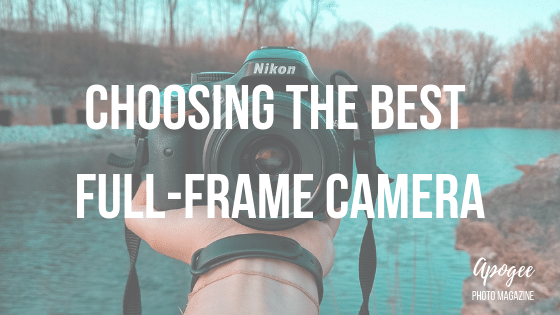 Today, the best full-frame camera combines excellent image quality with impressive speed, durable build, and user-friendly controls. While many full-frame models still sit at the top-end of the market, the price of an entry-level full-frame camera has noticeably dropped in recent years, opening up full-frame photography to a greater number of enthusiasts than ever before.
Today, the best full-frame camera combines excellent image quality with impressive speed, durable build, and user-friendly controls. While many full-frame models still sit at the top-end of the market, the price of an entry-level full-frame camera has noticeably dropped in recent years, opening up full-frame photography to a greater number of enthusiasts than ever before.
It seems to be part of a photographer’s nature to endlessly fuss over minor technical details in the hope that we’ll somehow make dramatic improvements to the quality of our images. For sure, things like anti-reflective lens coatings or ever-faster ISOs no doubt play some part in making photos look a little nicer. But, realistically, if you’re still struggling with a consumer-level camera that uses a cropped APS-C sensor, such minor trifles are of little genuine concern.
Here nothing would improve your photography more than simply moving up to a full-frame model. But which is the best full-frame camera to go for? And what practical differences will it make to your photos? Read our guide to the best full-frame camera to find out.
Why Go Full-Frame?
Full-frame refers to a sensor size that is equivalent to the surface area of a negative in the old 35mm analog film format. This is more than two and a half times bigger than the APS-C sensors commonly used in entry-level DSLRs and other consumer cameras. That’s quite a significant jump in size, but what practical benefits does a camera with a full-frame sensor offer over a cropped-sensor model?
Improved Image Quality
The first, and probably the most important, reason to go full-frame, is simply that a camera with a bigger image sensor will in practice produce higher resolution images. This means greater detail and less pixelation. Making files better suited for viewing big on a screen, or printing as enlargements.
Shallower Depth of Field
Another very good reason to go full-frame is that the larger sensor will permit you to achieve a shallower depth of field. So if you’ve been struggling to emulate those beautiful portraits with the focus only on the eye and all else fading off into a background of soft and swirling bokeh, lack of success in this department may simply be down to using a small sensor.
Even if image quality were not markedly superior when using a larger image sensor, many photographers would nonetheless choose a full-frame camera purely to achieve this kind of selective-focus effect.
Improved Dynamic Range
Dynamic range refers to a camera’s ability to represent the extremes of light and dark within a scene. A full-frame sensor is capable of capturing a wider gamut of tones, ranging from deeper shadows to brighter highlight areas.
Improved Low Light Performance
With a larger surface area available for capturing light, full-frame sensors perform much better in low lighting conditions than those of a smaller format such as APS-C. This means that you’ll be able to shoot at higher ISOs before digital noise becomes noticeable in your images.
Other Notes
One other point to consider is that up until now at least, full-frame sensors have only really featured in professional level cameras. As pro-photographers tend to subject their equipment to a greater degree of stress and strain than casual enthusiasts, this means that full-frame sensors tend to come in better-built cameras.
Not only in cameras that are more strongly made, but also ones offering a greater number of pro-level features: such as a high resolution (megapixels), weather sealing, faster and more accurate autofocus, higher burst shooting rates, a superior RAW buffer, etc.
So although a step up to a full-frame camera likely entails considerable extra expense when compared with a consumer level model, you will generally get a whole lot more for your money in other areas too.
Are you convinced? Let’s take a look at some of the best full-frame cameras currently on the market.
6 of the Best Full-Frame Cameras
1 – Sony Alpha 7 III
Pros:
+ 24 MP image sensor
+ 4K video
+ Good low light performance
+ Fast AF
+ 10 fps burst rate
+ Long battery life
+ Dual HD card slots
+ High-resolution touch screen and EVF
+ Completely silent when used in Silent Mode
Cons:
– LCD is tilt only, not fully articulating
– No built-in flash
When Sony released the Alpha 7 III earlier this year, it was introduced as the manufacturer’s basic camera. If only everything marketed as “basic” could be so wonderful. Indeed, as far as value for money and features go, it doesn’t get much better than this.
Of course, at “only” 24 MP, the a7 III’s image sensor doesn’t produce the absolute highest resolution images of all full-frame cameras on the market; but it nonetheless produces great quality images. An at “merely” 10 fps, the a7 III’s burst shooting rate is by no means the fastest out there today; yet it’s still very fast.
On top of which you get zippy AF, full-frame 4K video, space for two SD cards, a superb touch screen, silent shooting mode, fantastic dynamic range, noise-free low light performance, and good battery life. What more could anyone want?
I don’t know about you, dear reader, but when I go on vacation, I just book a regularly scheduled flight with a commercial airline. The plane is invariably an Airbus, Boeing, or similar.
I can’t confess to loving air travel, but the commercial airline is comfortable enough and gets me to the other side of the world in just a few hours: something that was unthinkable only a century ago. I’m pretty happy with this arrangement, as it means I’ve been able to travel to all manner of distant destinations without the journey itself ever being a major hassle.
But what’s that you say? Some planes will make the trip in half the time? Flying faster than the speed of sound? Undetected by radar? Capable of vertical take off and landing?
That’s nice. But even if you fly by stealth-jet, we’re still going to be sitting under the same sun when we get to the other end; our toes dipped in the same ocean.
There are other full-frame cameras that are higher specced, faster, more powerful, and produce higher resolution images than the Sony Alpha 7 III. However, whether you genuinely need the “superior” features such cameras have to offer is something you’ll need to decide for yourself. But you can be sure that you’ll pay dearly for them if you do.
For most people, though, the Sony Alpha 7 III offers everything they will need. And at a great price. For this reason, we recommend the Sony Alpha 7 III as the best full-frame camera on the market today.
Arguably, the one “catch” with the Alpha 7 III is the high cost of certain lenses beyond the standard kit options: some of the longer zooms can easily set you back as much as the camera body itself. But this is equally true of most of the cameras we look at here. In short, it’s something to be aware of, but is certainly not a valid reason for avoiding the a7 III altogether.
- Advanced 24.2MP BSI Full frame Image Sensor w/ 1.8X readout speed Advanced 24.2MP Back Illuminated 35 millimeter Full frame Image Sensor Sony test conditions. Compare to the 7 II
- 15 stop dynamic range, 14 bit uncompressed RAW, ISO 50 to 204,800. Compatible with Sony E mount lenses. Can be connected via Bluetooth with smartphones featuring (as of the date of release)- Android (Android 5.0 or later, Bluetooth 4.0 or later), iOS (Bluetooth 4.0 or later)
- Up to 10fps Silent or Mechanical Shutter with AE/AF tracking. Battery Life (Still Images): Approx. 610 shots (Viewfinder) / approx. 710 shots (LCD monitor), Battery Life (Movie, continuous recording): Approx. 200 min (Viewfinder) / Approx. 210 min (LCD monitor)
- 693 phase detection / 425 contrast AF points w/ 93 percent image coverage. Focus Sensor: Exmor R CMOS sensor
- In the box: Rechargeable Battery (NP FZ100), AC Adapter (AC UUD12), Shoulder strap, Body cap, Accessory shoe cap, Eyepiece cup, Micro USB cable.Metering Type:1200 zone evaluative metering
2 – Nikon D850
Pros:
+ 45 MP image sensor
+ 100% optical viewfinder
+ 7 fps burst rate (9 fps with additional grip)
+ 4K video
+ Dual SD card slots
+ 3.2” tilting touch screen
Cons:
– Expensive
– Big and heavy
Objectively, the Nikon D850 has perhaps the greatest claim to the title of the best full-frame camera right now. It’s a serious powerhouse of a DSLR, offering an amazing 45-megapixel sensor, great dynamic range, and surprisingly little digital noise for such a high-resolution camera.
It’s not only about image quality either, as the D850 can also hold its own when it comes to performance. Autofocus is fast and accurate, and the camera’s burst shooting rate will likely be quick enough for all but the most serious of sports photographers (or those with a similar need for extreme speed).
There’s also 4K video capability and a slightly larger than standard tilting LCD. Meanwhile, two SD card slots secure the D850’s status as a pro-level machine.
To be sure, this is a big old beast of a camera. And in order to achieve maximum continuous shooting rates, you’ll need to add the extra battery grip to your set-up too – thus further increasing weight and bulk. But given just how solid an all-around performer the D850 is – providing such an excellent balance of speed, durability and image quality – a little extra heft seems like an acceptable compromise.
That being the case, why doesn’t the D850 take pole position on our list of the best full-frame cameras?
Well, if you genuinely need a camera of this caliber, then yes, you might want to move the D850 to the top of your own mental shortlist. The fact is though, for most of us, the D850 will be total overkill. We just don’t need a camera with this kind of spec. And many of us could also happily live without its pro-level price tag too.
If the Nikon D850 is for you, you’ll know it already. For the rest of us, Sony’s Alpha 7 III an amazing choice.
- Nikon designed back side illuminated (BSI) full frame image sensor with no optical low pass filter
- 45.7 megapixels of extraordinary resolution, outstanding dynamic range and virtually no risk of moiré
- Up to 9 fps1 continuous shooting at full resolution with full AF performance
- 8K6 and 4K time lapse movies with new levels of sharpness and detail; File system : DCF 2.0, Exif 2.31, PictBridge
- Tilting touchscreen, Focus Shift shooting mode, outstanding battery performance and much more; Total Pixels: 46.89 million
3 – Canon EOS 5D Mark IV
Pros:
+ 30 MP image sensor
+ 3.2” touchscreen
+ 4K video
+ Great Live View AF
+ 7 fps burst rate
+ Dual Pixel RAW technology
+ Dual SD card slots
+ Weather sealed
The Canon EOS 5D Mark IV is another serious contender in the full-frame stakes. With its strong build and improved weather sealing over the Mark III, this is a piece of photographic kit that is ready to go anywhere and do anything.
Building on previous versions of the EOS 5D, the Mark IV produces incredibly detailed 30-megapixel files, and displays good, noise-free performance at ISO 800 and even beyond. Color rendition, too, is fantastic.
The camera also features Dual Pixel Raw technology. This is something along the lines of bracketing for lens focus: pressing the shutter captures two images in one, each with the focus set at slightly different points. Theoretically, this offers the possibility to rescue a slightly soft image in post-production, by shifting between the pixels.
Of course, shooting in this mode means bigger files. Indeed, reflecting the fact that the RAW effectively contains not just one photo, but two, files are almost twice the size.
The Mark IV’s 61 point AF performs excellently, delivering even in really poor lighting conditions. And Dual Pixel CMOS AF – for shooting in Live View mode – is also much better than with the last iteration of the 5D.
When the Mark II version of this camera was released some years ago, it caused a considerable stir within the industry for its (at the time) rather exceptional video quality. While there’s nothing quite so revolutionary included here, the Mark IV does at least deliver 4K capability and comes with an external microphone and headphone ports, plus space for two SD cards. So while there’s little for videographers to get too excited about this time around, they’ll certainly not have any major cause for complaint either.
All in all, the Canon EOS 5D Mark IV is a great all-around performer that will satisfy the needs of most photographers, of any level. However, unless you’re already tied to a Canon system, Nikon’s D850, with it’s considerably higher pixel count and superior AF performance, looks like the better deal out of these two. Hence why the Canon EOS 5D Mark IV only makes it to third place on our list of the best full-frame cameras.
- New 30.4 Megapixel* full-frame CMOS sensor for versatile shooting in nearly any light, with ISO range 100-32000; expandable up to 50-102400 (equivalent ISO).
- 4K Motion JPEG video (DCI cinema-type 4096 x 2160) at 30p or 24p; in- camera still frame grab** of 4K 8.8-Megapixel images; multiple video options include Full HD up to 60p, and HD up to 120p.
- Superb Dual Pixel CMOS AF for responsive and smooth AF during video or Live View shooting; LCD monitor has full touch-screen interface, including selection of AF area.
- Excellent performance - up tp 7.0 fps*** continuous shooting speed with high-performance DIGIC 6+ Image Processor for improved speed and excellent image quality.
- 61 AF points with expanded vertical coverage with 41 cross-points, and AF possible at all 61 AF points with many lens + extender combinations effective at f/8.
4 – Sony Cyber-shot DSC-RX1R II
Pros:
+ 42 MP image sensor
+ Sharp, 35mm Zeiss lens
+ Maximum aperture of f/2
+ Pop-up electronic viewfinder
+ Easy and accessible controls
+ Shoots RAW
+ Anti-aliasing filter can be switched off
+ WiFi
Cons:
– No built-in flash
– Fixed, non-zoom lens
– Poor battery life
– No 4K video
– No touch-screen
If you thought that ultra-high resolution full-frame sensors were the preserve of big and bulky workhorse DSLRs, think again. Because the Sony Cyber-Shot DSC RX1R II is a palm-sized point and shoot camera packing an incredible 42 MP full-frame image sensor. Considered purely in terms of the ratio of image quality to camera size, the RX1R II is the most powerful camera on our list: a veritable David to all the DSLR and Mirrorless Goliaths.
While there are a number of other full-frame compact cameras on the market today, with its 35mm lens, the RX1R II is a far more versatile tool than its 28mm competitors. A 28mm lens might be great for shooting in enclosed spaces or getting all of a panoramic view in the shot, but for any other kind of photo you’ll need to be virtually standing on top of your subject for it to be big enough in the frame to really see anything. And a 28mm also makes for an extremely unflattering portrait lens (sure, I have a big nose, but not that big!).
Meanwhile, a 35mm is just wide enough to be able to deal with most shooting situations without either making the subject too small or creating too much perspective distortion. So if you really have to go fixed, and you kind of do with a compact camera, then it should probably be a fixed 35mm. Better still if it’s one offering a fast maximum aperture of f/2 and a very respectable minimum aperture of f/22, as is the case here.
As if a 42 MP full-frame image sensor weren’t already enough, the RX1R II’s low pass filter can be deactivated for even sharper photos. And while we’re on the subject of resolution, shooting can either be done via the bright, sharp LCD or the 2.4-million dot pop-up EVF for a more old-school-style experience.
The Sony Cyber-Shot DSC RX1R II's controls are very well thought out, and the most commonly used functions are all easily accessible via physical dials and switches – thus avoiding the need to spend much time descending into labyrinthian menus. Sony is to be commended here for its understanding of the true reason of a point and shoot: speed and ease of use. Extra marks still for combining these features in a tiny package capable of producing such incredible quality images.
- 42.4MP Full-frame back-illuminated Exmor R CMOS sensor
- 35mm F2.0 ZEISS Sonnar T lens with macro capability
- World's first user-selectable optical variable low-pass filter
- Fast Hybrid AF with 399 focal plane phase-detection AF points
- Retractable 2.4-million dot XGA OLED Tru-Finder w/ ZEISS T coating
5 – Pentax K-1 Mark II
Pros:
+ 36 MP image sensor
+ Strong build
+ Weather sealing
+ Good controls
+ Built-in stabilization
+ 3.2” vary-angle LCD
+ WiFi and GPS
+ 100% optical viewfinder
+ Dual HD card slots
Cons:
– No 4K video
– 4.4 fps burst rate
– Non-touch LCD
– Big and heavy
Strongly built from alloy, and sealed against the elements, the Pentax K-1 Mark II is a great choice of full-frame DSLR for adventure travel and landscape photography. And for those more interested in pointing their camera towards the heavens, the K-1 Mark II comes with Pentax’s Astrotracer function: a shooting mode that allows you to capture long exposures of the night sky while retaining the stars as pinpricks of light, rather than capturing them as blurred lines.
This same technology is behind the K-1 Mark II’s excellent SR II shake-reduction system, which helps to keep hand-held shots sharp and blur-free even at lower shutter settings.
However, while the K-1 II’s 33-point autofocus performs well enough in most situations, it’s not the speediest on the market. What’s more, the 4.4 fps continuous shooting rate is slower than even considerably cheaper cameras, so those most interested in street photography, events, or sports, might want to look elsewhere.
With that said, a 36-megapixel full-frame sensor with great dynamic range makes for some impressively rich and detailed files, and so the K-1 II is a camera that would undoubtedly also suit portrait and studio photographers.
The camera offers an articulating rear screen and a 100% optical viewfinder. However, with no 4K video, it won’t be the first choice for videographers.
- 36 MP AA filter less shake reduction sensor with APS C crop mode for compatibility with Pentax k mount lenses
- Hand Held Pixel Shift Resolution that allows 4 images to be complied into an superior image with increased color rendition and sharpness
- Engine Accelerometer for reduced image noise, faster focusing and increased image sharpness
- Magnesium Alloy, Weather Resistant body for every demanding situation
- Astro tracer extended exposure mode with reduced star trails
6 – Canon EOS 6D Mark II
Pros:
+ 26 MP image sensor
+ Vari-angle touch screen
+ Dual Pixel CMOS AF
+ Good ergonomics
+ Great connectivity
+ Weather sealed
Cons:
– Single HD card slot
– No 4K video
Until quite recently, full-frame was mostly the exclusive domain of professionals, or at least serious enthusiasts. Not anymore, as time passes, and once state-of-the-art full-frame cameras are replaced by newer models with absurdly high pixel counts, last season’s cutting edge technology becomes this season’s bargain-bin find.
Only released in 2017, the Canon EOS 6D Mark II could not in any way be considered an old camera. But the thing is, a lot the technology inside the 6D II isn’t all that new either. Indeed the camera was never truly cutting edge even when it first came out. Indeed the camera was widely trashed by reviewers and photographers alike at the time of its release. Not because it’s a bad camera (it’s not), but simply because people were expecting a lot more from it.
Given the 6D Mark II’s largely unappreciated reception, it is unsurprising that Canon has since significantly discounted the camera. And what was something of a flop at one price point, suddenly becomes a rather attractive deal at another.
To be sure, if you can only find the 6D Mark II at a price approaching that of the Sony Alpha 7 III, then go with the Sony. But if you can find a 6D II for a song, and aren’t sold on the idea of Mirrorless, then Canon’s offering makes a highly accessible route into full-frame DSLR photography.
And what do you get if you follow this route? Well, ignore the whiners, as you actually receive a rather decent camera.
Sure, autofocus isn’t the world’s greatest, and a 6.5 fps burst shooting rate seems somewhat pathetic when compared with the Sony a7 III’s 10 fps. But you did say you want a bargain-priced camera with a full-frame image sensor, right?
And the sensor’s actually pretty good. I mean, 26-megapixels on full-frame was never likely to be anything less than superb. Although it should be noted that high ISO performance can sometimes get a little noisy.
Design and layout of controls are very good too. And with GPS, WiFi, Bluetooth, and NFC you’ll certainly have no difficulty in getting your files off the camera.
Considering that it’s full-frame, the 6D II is also pretty small. Although, if that’s your number one criteria, then the Sony DSC-RX1R II will be a better option – albeit one that’s a lot more expensive.
Alternatively, Pentax’s K-1 Mark II (above) makes for a somewhat higher resolution alternative to the 6D II, but with otherwise quite similar spec. In fact, now that we mention it, as with the Pentax, the Canon EOS 6D Mark II is weather-sealed too. There’s no pleasing some people, huh?
- 26.2 Megapixel Full frame CMOS Sensor
- Optical Viewfinder with a 45 point All Cross type AF System. Compatible Lenses: Canon EF lenses (excluding EF S and EF M lenses)
- Dual Pixel CMOS AF with Phase detection & Full HD 60p
- DIGIC 7 Image Processor, ISO 100 40000. GPS, Wi Fi, NFC and Bluetooth low energy
- Vary angle Touch Screen, 3.0 inch LCD
Final Thoughts
Only a few years ago, any discussion about full-frame cameras, or even just professional-level cameras more generally, would have been dominated by two names: Canon and Nikon. In fact, these two brands have ruled the market for professional 35mm cameras for several decades. All the while, Sony was a brand famous for Playstation, Camcorders, or, going even further back, the cassette Walkman. But never cameras.
How times have changed.
Nikon and Canon are still major players in the field, but there’s been a serious shake-up of the running order and their dominance is now very far from certain. Meanwhile, Sony is emerging as a potential winner here. Not wishing to mix sporting metaphors, but Sony fully backed the mirrorless horse at an initial stage of the race and is now reaping the rewards of early investment with no less than two models featuring on our list of the best full-frame cameras of 2018.
We could actually have included a couple of other excellent Sony full-frame Mirrorless models here too. Still, it’s the Alpha 7 III that really stands out right now as the best deal for those looking to move up to full-frame.
However, if you are currently shooting on anything smaller than a full-frame image sensor, the step up to a full-frame camera, any full-frame camera, will already cause the quality of your images to go through the roof. Whether it’s a slightly older DSLR with an entry-level price-tag, Sony’s “basic” a7 III at mid-level, or a top-end tank of a DSLR, you will not regret making the move to the world of full-frame photography.
The best full-frame camera is any full-frame camera that you can use regularly. If that means going for an Alpha 7 III; great, it’s unlikely you’ll be disappointed. If you think you’ll need something faster and more expensive, so be it. If neither of these options are currently within your budget, scrimp and save until you can afford a Canon EOS 6D Mark II, which at its discounted price point presents excellent value for money.
All of the above models have some right to claim the title of the best full-frame camera. Accordingly, all will permit you to produce fantastic looking images. Happy shooting!




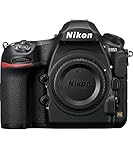








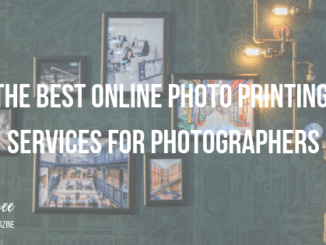
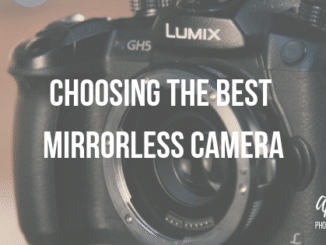
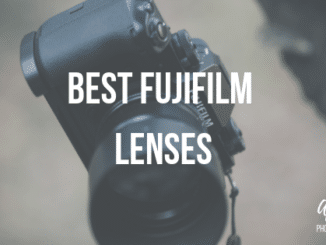
Leave a Reply